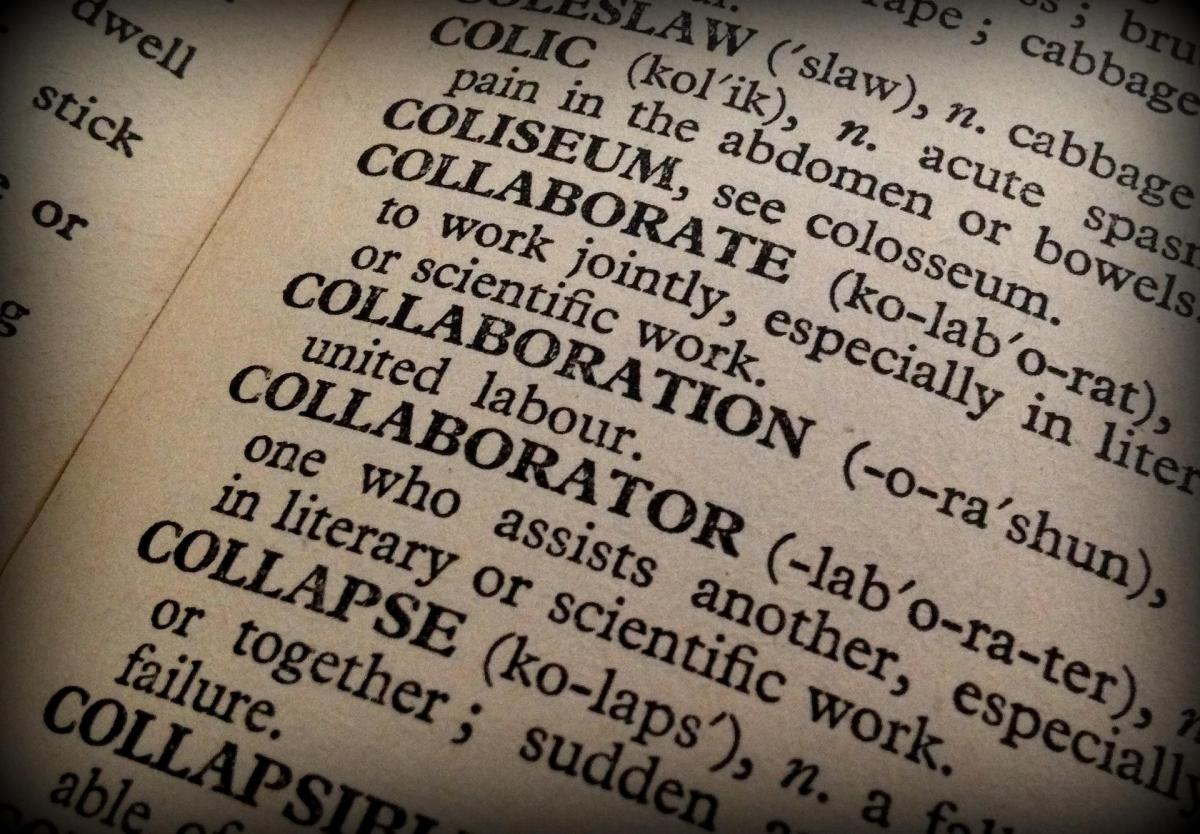 In the works of contemporary journalists, the process of cooperation is gaining more and more importance. Without cross-border international collaborations, massive investigative projects like Panama and Paradise papers could not have been carried out. However, collaboration is also essential when project partners from different sectors of the labour market have to work together. In the NEWSREEL research report, we emphasise how collaborative journalism appears in the media landscape and the journalism courses of the universities of the partner countries.
In the works of contemporary journalists, the process of cooperation is gaining more and more importance. Without cross-border international collaborations, massive investigative projects like Panama and Paradise papers could not have been carried out. However, collaboration is also essential when project partners from different sectors of the labour market have to work together. In the NEWSREEL research report, we emphasise how collaborative journalism appears in the media landscape and the journalism courses of the universities of the partner countries.
Collaborative journalism in the media
The interviews highlighted that the term collaborative journalism is not widely used in the NEWSREEL countries, and there is no consensus about its meaning. According to Cristian Lupșa (Decât o Revistă), it is journalism made by several media entities together, in different forms; however these collaborations are not very common in Romania, and most of the journalists work individually. In Hungary, the role of cooperation becomes essential because the number of independent critical organs is continuously decreasing. Mostly independent editors like to participate in collaborative projects, but Attila Bátorfy (Átlászó) and Gergely Dudás (Politis) pointed out that everyone is keen to protect their territory, so international collaborations are often more successful than the Hungarian ones. This statement is also true in the case of Romania.
As David Schraven (Correctiv) stated, ‘media and journalists who do not cooperate with others will not survive’. He understands collaboration with the audience as a form of collaborative journalism, which is also known as participatory journalism. In Portugal, collaborations are not frequent, and none of the Portuguese interviewees mentioned any examples of collaboration with the audiences.
Types of collaborative journalism
In all four partner countries, there are different forms of collaborative journalism. Apart from single professional journalists working with other professional journalists they can also work with NGO-s, like n-ost from Germany and the Rise Project from Romania, mostly on significant leaks such as the Panama Papers in which all NEWSREEL countries participated. Moreover, Transparency International Hungary leads a mentoring programme for young journalists whose writings are published in particular weeklies and news portals.
Various media houses can also collaborate both on a national and European level. In Hungary, the investigative journalism team Direkt36 publishes its findings on its portal as well as on one of the most prominent Hungarian news portals, 444, and on the news programme of the largest private television channel, RTL Klub. As the German partners underlined, some stories are just investigated jointly (like the cooperation of Süddeutsche Zeitung, NDR and WDR), while others are written by the collaborating teams. In other projects, partners share databases; and in other cases, only the results of the investigation are shared.
Cooperation between journalists, IT experts, designers and others are also discernible everywhere. Last but not least, another common form of this type of journalism is when journalists collaborate with their media audiences (mostly with internet users) in the cases of crowd-sourcing or participative journalism.
 Advantages and disadvantages
Advantages and disadvantages
One of the most significant advantages of collaborative journalism is that the story gets multiplied attention because it is published in several media, and the attention becomes even higher when it is an international collaboration. Participating in a vast international collaboration provides safety for individual journalists as well. Nevertheless, when a leak comes from a source, everyone who is involved can be in danger.
The need for collaboration means a complete reversal of former practices because competition and exclusivity used to be the predominant professional patterns. It is not so easy to change this attitude, but with the help of new collaborative-oriented media organisations, it can be implemented slowly.
Hungarian journalist, Anita Vorák (Direkt36) believes that one obstacle of international cooperation is that it is difficult to find a foreign partner who is equally interested in a subject. As previously mentioned, the issue of trust is important because when you work with someone on a project with confidential data, you have to trust the person completely.
Another problematic factor is that although media professionals are usually open to collaborating, such efforts are usually initiated by individual journalists rather than by the journalism profession itself so far. According to Răzvan Ionescu (Recorder.ro) more emphasis should be placed on collaborations in journalism education.
Collaborative journalism in higher education
None of the analysed institutions in Hungary, Romania, Germany and Portugal teaches collaborative journalism as a specific course. The most popular form of teaching collaboration is to make students work in teams during their seminars.
Project works as the main field of collaboration – Romania, Hungary and Portugal
In Romania, collaborative journalism is underdeveloped, not just in the field of media, but also in the universities’ journalism programmes. However, some institutions lecture the introduction of collaboration in journalism and students discuss case studies. At the Babeș-Bolyai University, e.g., students work collaboratively to produce content for online radio, video-sharing services or online magazines, and the feedback is generally positive.
Similarly, in Hungary, collaboration plays an important role in every analysed institution, when/ students produce their own media contents. The Metropolitan University puts particular emphasis on project works, which means two or three team members work together to carry out video reports or other media projects, while they reflect on a contemporary problem of public life. At the University of Szeged, it is a huge desire to teach collaborative journalism as an independent field shortly.
In Portugal, the Nova University of Lisbon has been part of a collaborative project, called Repórteres em Construção (REC). In this project, journalism students from several universities produced investigative reporting for a website and a radio show. Some interviewees mentioned the importance of using tools like Slack (a collaborative web-based tool) in some of their work. At the University of Minho, they do not ignore collaborative journalism, but it is not the focal point of any course.
Besides national project works - Germany
 In Germany, students work in teams in the framework of teaching newsrooms as well as during courses ending with a journalistic project. As Klaus Meier (Catholic University Eichstätt-Ingolstadt) underlined, ‘journalists are no longer individual workers – lonely riders – they need to be able to work in teams [..] And once you are able to work in teams, you will be able to work in international teams afterwards.’ Stuttgart, Cologne and Eichstätt specifically enable their students to work in international contexts and spend one semester of their curricula abroad, while Dortmund also requests from students to do their internship abroad. Similar to Romania, some departments use their lectures to discuss forms of collaboration in journalism, mainly through case studies. In Stuttgart, a module on crowdsourcing is also available. During these courses, students can learn how to collaborate with the audience.
In Germany, students work in teams in the framework of teaching newsrooms as well as during courses ending with a journalistic project. As Klaus Meier (Catholic University Eichstätt-Ingolstadt) underlined, ‘journalists are no longer individual workers – lonely riders – they need to be able to work in teams [..] And once you are able to work in teams, you will be able to work in international teams afterwards.’ Stuttgart, Cologne and Eichstätt specifically enable their students to work in international contexts and spend one semester of their curricula abroad, while Dortmund also requests from students to do their internship abroad. Similar to Romania, some departments use their lectures to discuss forms of collaboration in journalism, mainly through case studies. In Stuttgart, a module on crowdsourcing is also available. During these courses, students can learn how to collaborate with the audience.
The significance of collaborations
As seen, none of the analysed higher educational institutions has courses on collaborative journalism, but most of them put emphasis on teaching their students how they should work in teams. In some institutions (primarily in Germany, but also in Romania) best-practice examples and case studies of collaborative journalism are also discussed during lectures. We believe, it is important to build networks not just in the field of media, but also on the level of journalism courses of the universities, nationally and cross-border. Our collaboration project, NEWSREEL will serve as a good example of this kind of international cooperation.
You can find the full sample of the universities in our research report(page 40-43). If you would like to read more about the role of collaborative journalism in the partner countries, check our report as well.
Photos: Pixabay